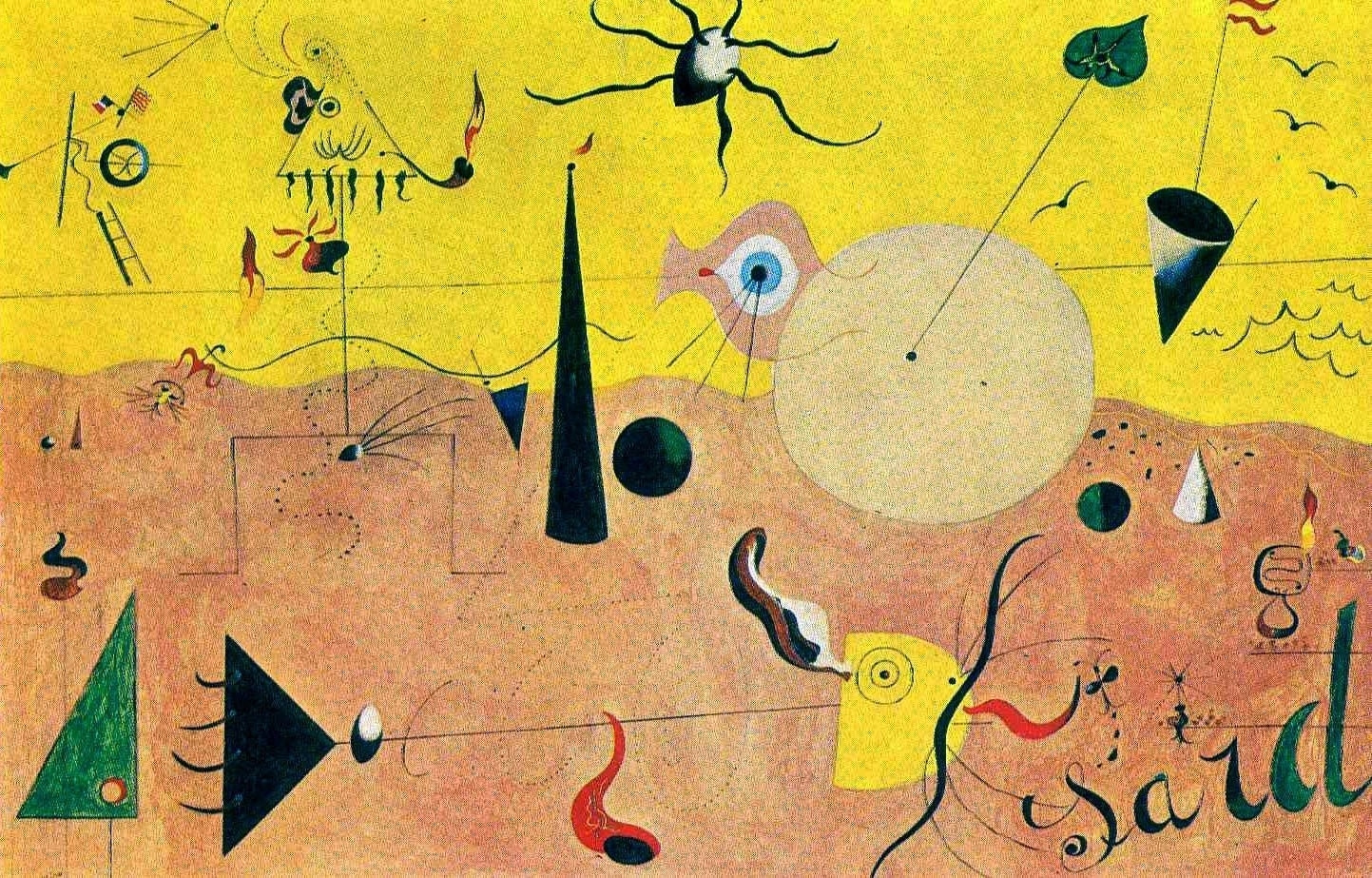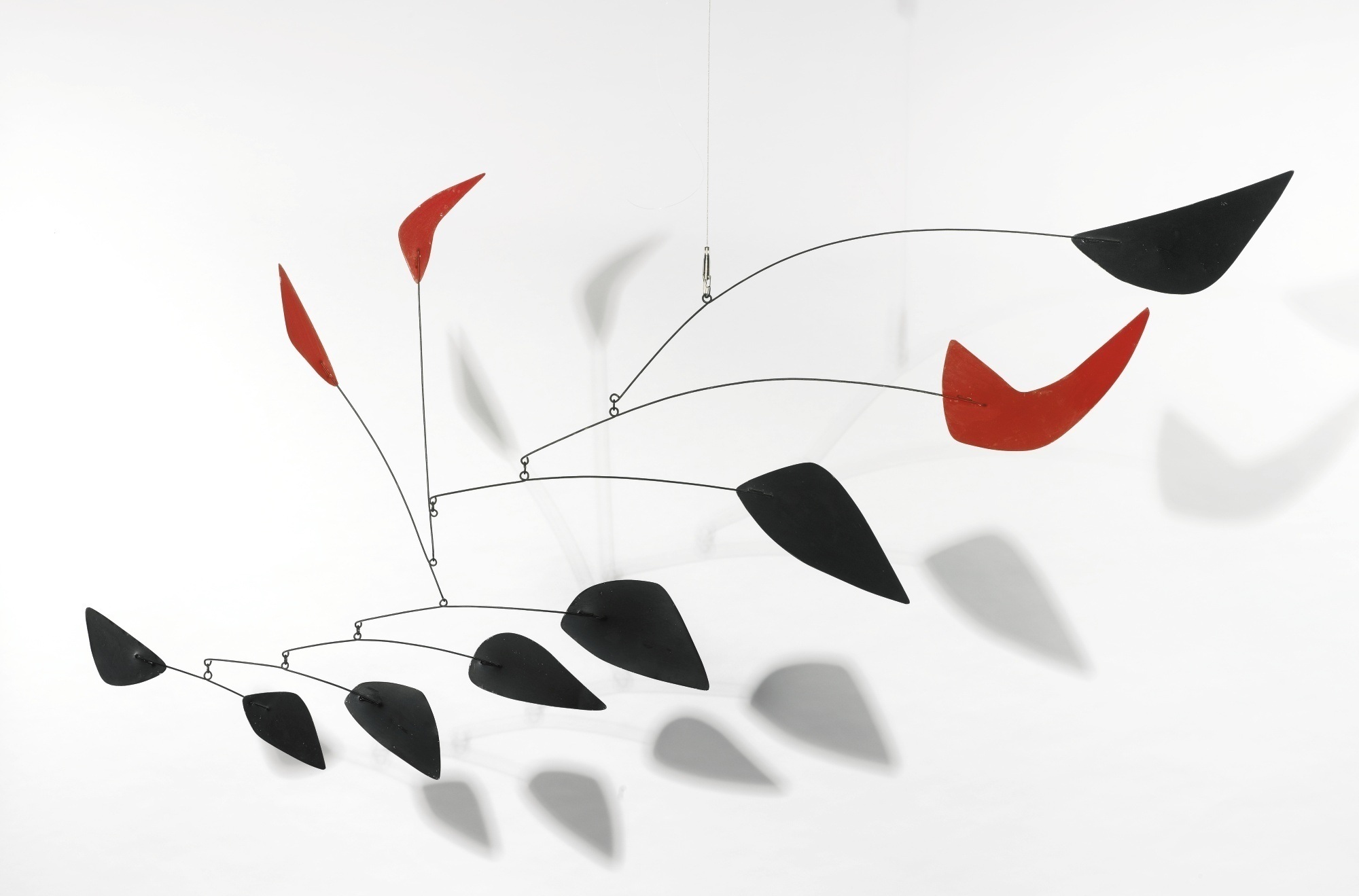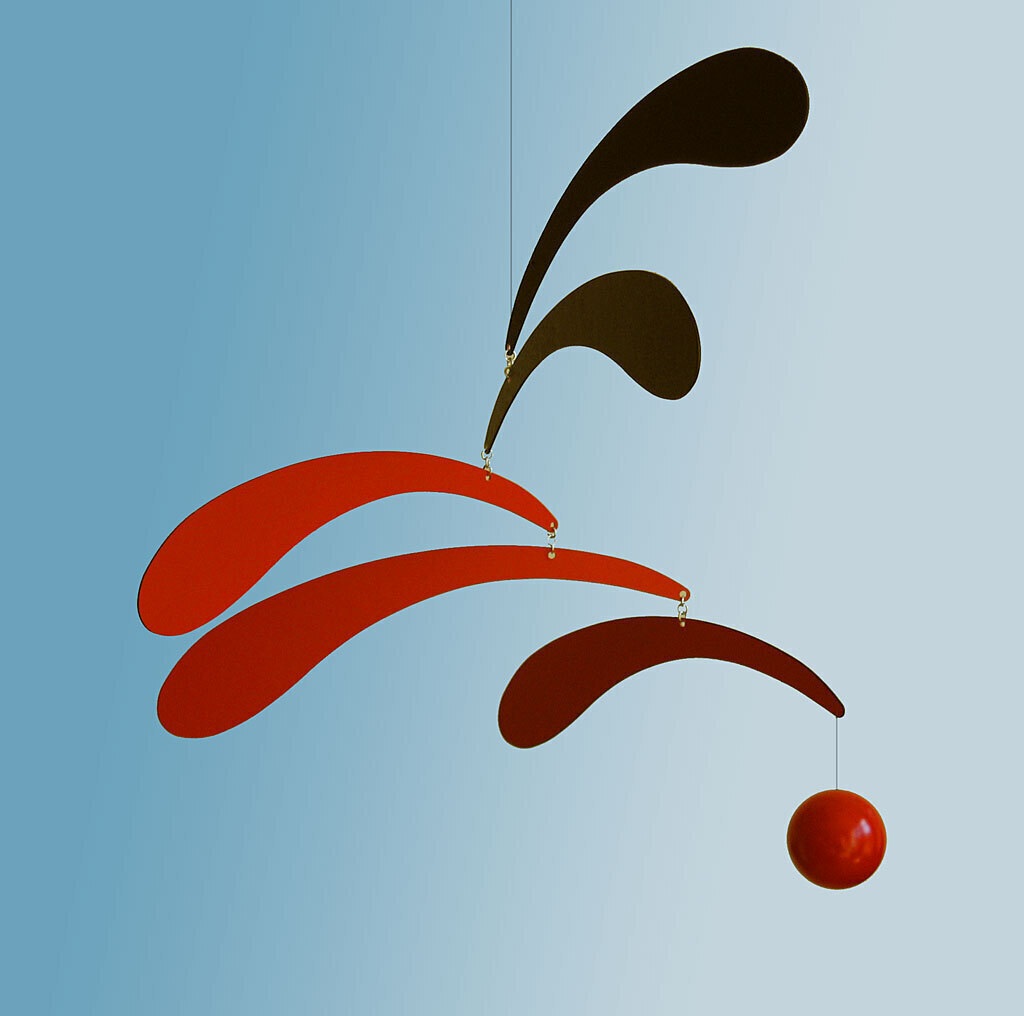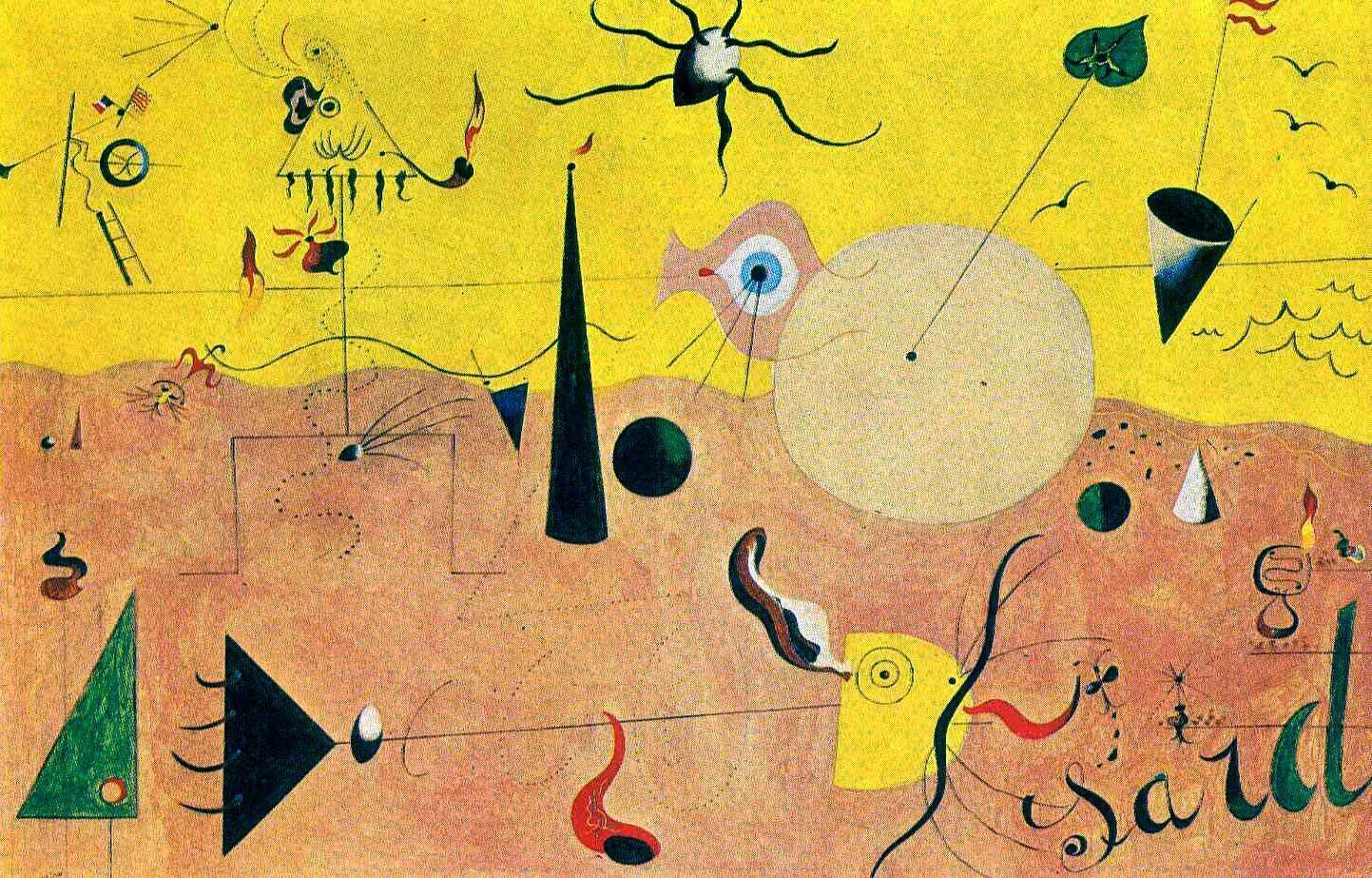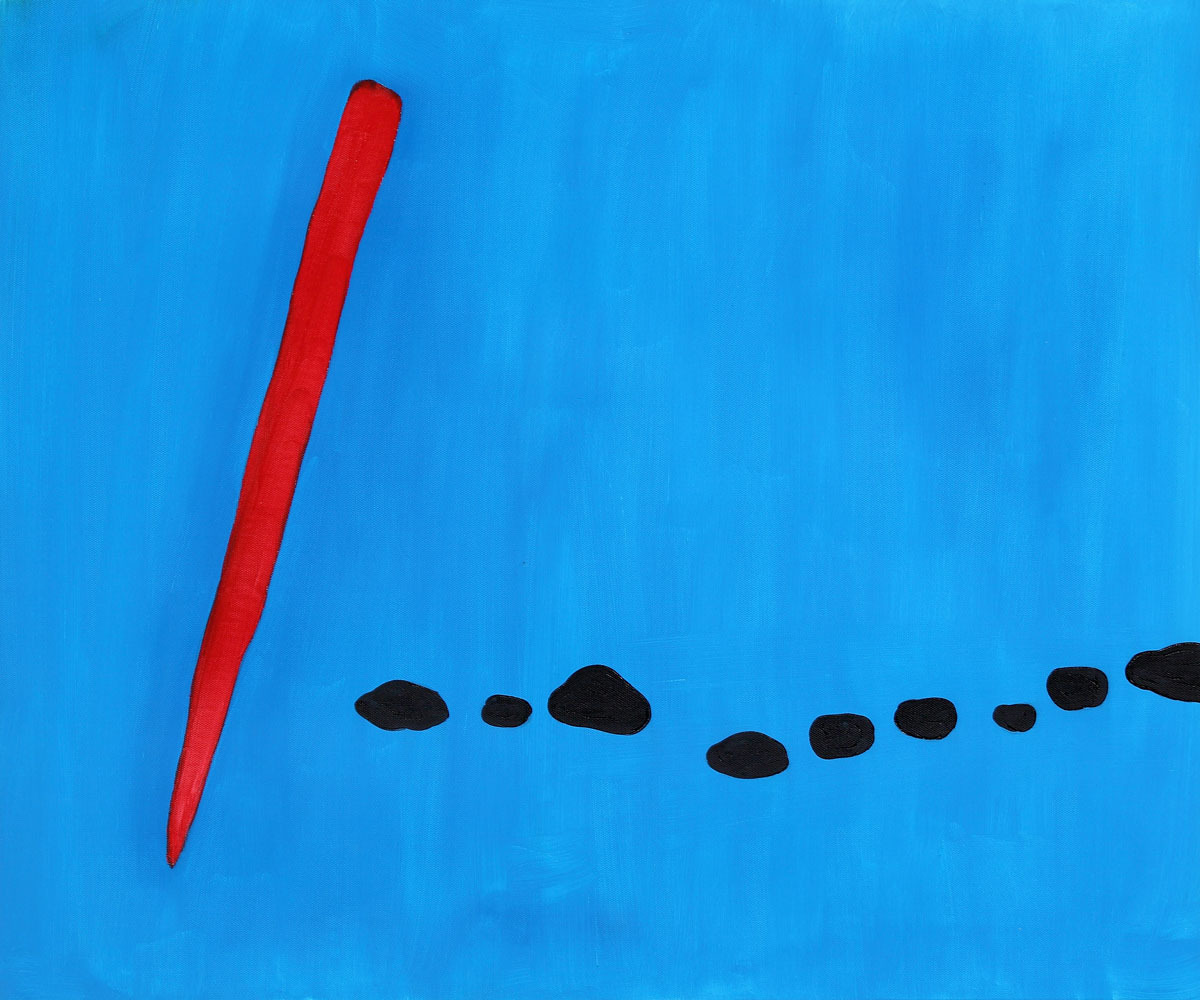In her next session, art critic and cultural historian Irina Kulik will draw a parallel between two artists—contemporaries Alexander Calder and Joan Miró—revealing how their paintings, plastic forms, and color schemes relate each other.
Before following in the footsteps of his family members, many of whom had been artists, American citizen Alexander Calder (1898–1976) received a technical degree and worked as an engineer. It wasn't until the late 1920s and early 1930s that his artistic career and involvement in the art milieu began, following his study at New York's Art Students League and several years in Paris. As a sculptor, he is best known for his development of mobiles (a term coined by Marcel Duchamp)—a novel three-dimensional medium made of separate yet connected parts suspended in air and set into motion by special mechanisms, touch, or simply by the flow of air. He also created static sculptures, calling them stabiles in contrast to the movable mobiles. In later years, Calder experimented with wood and metal, producing large environmental objects; he worked for avant-garde theatrical companies; made jewelry; and even painted original designs for aircrafts and cars, marked by his signature colors of yellow, red, and blue.
Thanks to his abstract works, organic forms allegedly derived straight from the unconscious, Barcelona-born Joan Miró (1893–1983) is one of the most recognizable artists and sculptors of the 20th century. Often associated with Surrealism, Miró's practice was nevertheless much wider and more experimental than the Surrealists' obsession with dreams and automatic drawing. Rejecting the idea of conventional oil-on-canvas figurative painting, he worked a lot with the techniques of collage, mosaic, and grattage; executed commissions for public spaces; and used materials such as ceramics and tapestry extensively. His color palette often included clear and bright tones of yellow, red and blue, just like Alexander Calder. Miró's sculpture maintained similar inclinations toward intense organic forms and colors.
